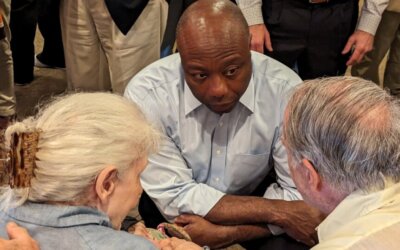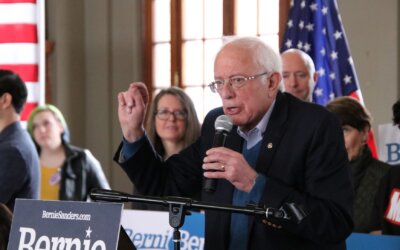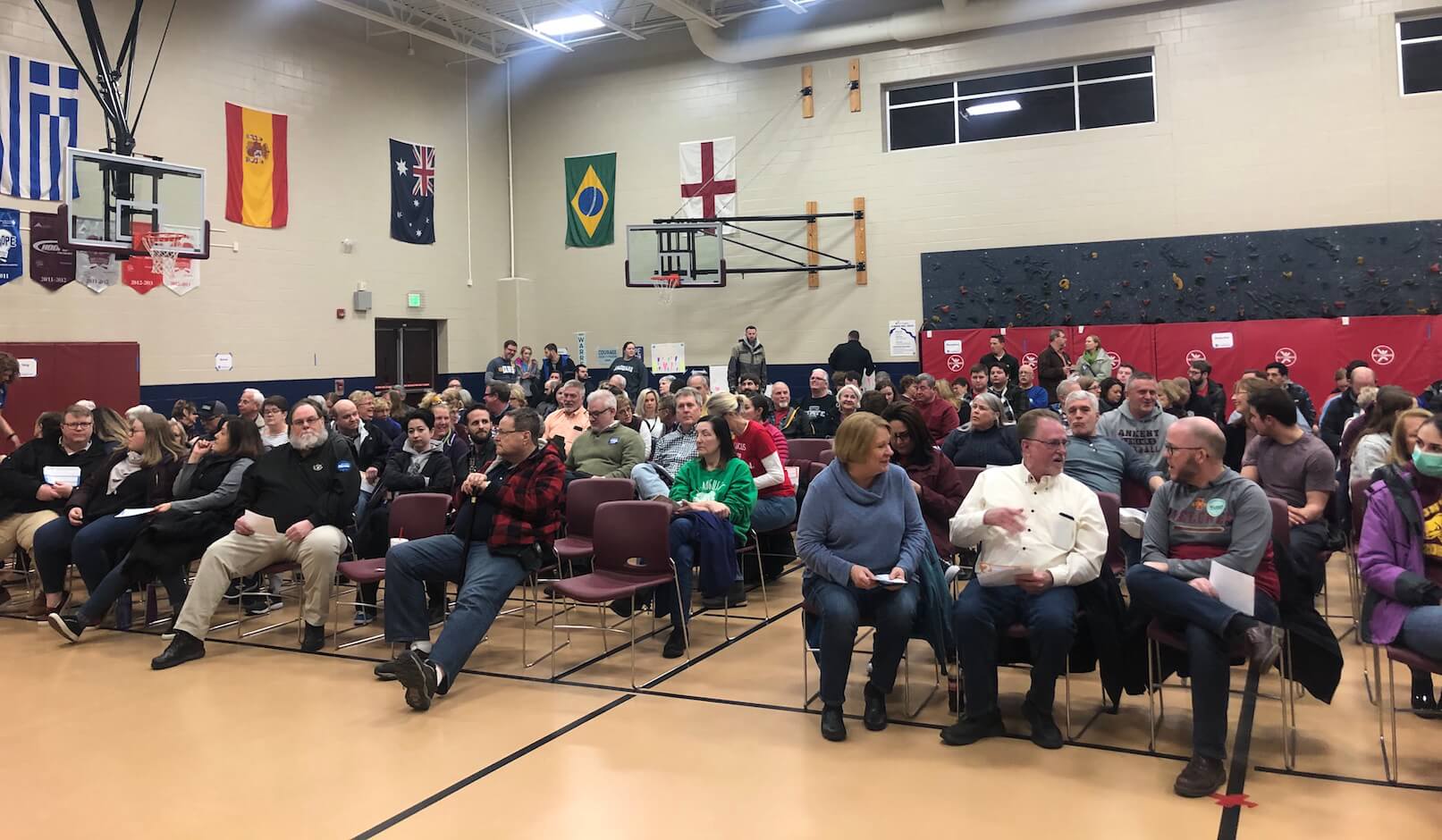
The end result of the Iowa Caucus may have largely been a split decision for Pete Buttigieg and Bernie Sanders, but there were plenty of useful insights we got into every candidate’s coalition from Monday. Where each candidate did well and poorly in Iowa could preview how they perform with certain demographics and regions in the next early states.
Here’s an in-depth look into each candidate’s strengths and weaknesses coming out of Iowa (consult the New York Times’ precinct map to follow along).
Pete Buttigieg
Strengths: Buttigieg stressed a unity message ahead of the Iowa Caucus, and that’s the kind of result he got on caucus night: a series of broad-based victories across the state. He will end with the most county victories, sweeping large swaths of rural Iowa, many mid-sized towns, blue-collar regions and the suburbs.
Much attention was paid to Buttigieg’s strength in the suburbs, but perhaps most impressive were his wins along the Mississippi River. Buttigieg carried seven of the ten counties along Iowa’s eastern seaboard, home to many of those Obama/Trump counties. His strong wins in Burlington (36% to Sanders’ 24%) and Lee County (36% to Sanders’ 25.3%) in Southeast Iowa may be his best victory of the caucus. These blue-collar areas are places you easily could have seen Sanders winning by large margins.
Buttigieg also dominated many mid-size towns like Fort Dodge, Indianola, Webster City, Waverly and Knoxville. Buttigieg even roughly split Ottumwa with Sanders, what should have been a stronghold for the senator. Buttigieg also didn’t place out of the top four in any county. Sanders surprisingly did in a few places, like Madison County.
Important for Buttigieg’s future hopes in the nominating calendar is how well he improved from the first alignment to second alignment. Statewide, he went from 37,557 in the first alignment to 43,195 in the second. We saw several anecdotal reports of well-trained Buttigieg precinct captains even convincing several of Yang’s nonviable groups to the Buttigieg corner, not an obvious pairing. As other candidates drop out of the race, Buttigieg showed an ability in Iowa to pick up their support.
[inline-ad id=”0″]
Weaknesses: There weren’t many downsides to Buttigieg’s win in Iowa. He even held his own on most of the college campuses. The one troubling spot was with what Iowa doesn’t have a lot of: black voters. And the midsize towns where Sanders bested Buttigieg were typically ones with sizable Latino populations.
Buttigieg’s numbers in Waterloo, the Iowa city with the highest percentage of African Americans, were brutal. Despite having the endorsement of Waterloo’s mayor, Buttigieg was wiped out on the northeast side of the river, where most of the black vote resides, gaining viability in only two of nine precincts. His turnout on first alignment in those nonviable precincts were as follows: 5, 1, 2, 6, 0, 5, 6, 2.
He did a little bit better in Des Moines’ North Side, but still missed viability in several precincts there, as well.
Perhaps with some wins, that national media narrative will change as more people tune into his candidacy, but Buttigieg’s extensive campaigning in Iowa didn’t move the needle with these communities.
Bernie Sanders
Strengths: If Sanders wins the Democratic nomination off the strength of a multiracial, working-class coalition, you could see how it got started in Iowa. He dominated special satellite locations that were filled with Latinos or refugees, painted his colors across precinct maps of urban, blue-collar areas and battled Biden to near-ties or better in black neighborhoods. His college campus margins weren’t nearly as large as 2016 due to Warren taking her fair share of votes there, but Sanders still carried the precincts with many young voters in college towns.
While Buttigieg did well in working-class areas in smaller towns, Sanders completely swept blue-collar precincts in urban areas. His raw vote on first alignment carried almost the entire city of Des Moines, about 3/4 of Cedar Rapids and most of Davenport, along with the west end of Council Bluffs, most of Sioux City and Cedar Falls. He stacked up major delegate wins across Des Moines’ South Side and the southwest quarter of Cedar Rapids.
Sanders’ wins crept far north in Sioux City’s precincts and the Cedar Rapids suburbs, winning areas you could see Buttigieg doing well in. The same occurred in Cedar Falls.
In mid-size towns with larger Latino populations, like Muscatine and Marshalltown, Sanders scored big wins. But his Marshalltown victory, where he carried seven of town’s eight precincts, was quite notable, as parts of that town are more like the mid-size ones that Buttigieg carried. One county over, at the Meskwaki Settlement, Sanders won by more than 2-to-1.
In the towns with very progressive voters, like Fairfield and Grinnell, Sanders won handily.
While Sanders had no choice but to lose raw votes to delegate sinks in college areas, his team very smartly organized for satellite caucuses, where delegates apportioned were on more of a sliding scale. Every state Democratic Party and campaign should learn some lessons of how Sanders’ campaign activated communities of color during this race.
Sanders also put up a good fight in many purely rural areas, but usually came in behind Buttigieg, Biden or Klobuchar there.
Save for the suburbs, where he struggled, the places in Iowa that Sanders carried are mostly more representative of what comes in later primary states.
[inline-ad id=”1″]
Weaknesses: Sanders had a great night, but there were two very major warning signs coming out of Iowa for him.
First off: turnout. For months, Sanders’ Iowa campaign had touted their spectacular-sounding internal campaign numbers. By late October, over 20,000 Iowans had attended their events, and they had already collected more commit-to-caucus cards by then than they had by a month out from the caucus in 2016. In September, they claimed 25,000 volunteers had made voter contacts of some sort in Iowa. They knocked 500,000 doors from January 1 through the caucus.
Well, where were the voters?
Sanders likely took a little over half of the 171,000 turnout in 2016, so he had maybe around 87,000 then. This time, his first alignment count was 43,671; his second, 45,826. It was enough to be first in those metrics, but was this really what the political revolution is supposed to look like?
This time, Sanders had lots of advantages in Iowa: old lists of all their former supporters, motivated activists ready to volunteer, a ton of money right from the start, the eventual largest field team, now-universal name ID and more. And yet he barely turned out half of his 2016 total, despite promises of a mass of new voters. An entrance poll showed a dip in first-time caucus-goers this year, not at all what many were expecting with Sanders’ impressive operation. At least youth vote turnout was up, so there’s that.
It’s a dangerous development for his electability pitch, which is that any suburban or independent voters he may lose the Democratic Party through his far-left policies, he’ll more than make up for with massive new turnout from young, diverse and working-class people. Iowa doesn’t have that many of the first two categories, but it does have a lot of the third.
But perhaps as Sanders gains strength in the primary, and the narrative becomes he really could win, it’ll inspire more nontraditional voters to convince themselves it is worth it to go out to the polls for Sanders.
Second, as expected, Sanders didn’t attract many caucus-goers during realignment. Fine for now, problematic for later. At some point in this primary, as other Democrats drop out, Sanders has to figure out a way to talk to the rest of the party that isn’t with him already. He didn’t test out those messages or tactics much in Iowa, their campaign often keeping to their own organizing activities rather than participating in major party events. Winning over 25% to 30% in the early states can get you first, but if you don’t grow that number when it becomes a one-on-one race, how do you become the nominee?
Sanders and his crew is off to a good start in the nominating process, but there were some real shortcomings exposed in his Iowa performance that need to be addressed.
[inline-ad id=”2″]
Elizabeth Warren
Strengths: It appears there were few precincts in the state where Warren was not viable. Her support was broad across the state, hitting viability in the suburbs, college precincts, diverse neighborhoods, working-class areas and small towns. That speaks to her core message that she’s best-suited to unite the party, pulling support from all parts of the Democratic coalition.
Like Buttigieg, Warren grew a lot on second alignments, bringing Iowans from nonviable groups over to her corner, demonstrating her support may grow as others drop out later in the primary.
Many of the Iowa precincts that Warren won outright were in liberal, higher-education and upper-income places. She won in Polk County places like the Beaverdale and Waterbury neighborhoods, as well as Windsor Heights. Warren competed strongly throughout the Des Moines metro suburbs, though Buttigieg usually came away with more delegates. These highly-engaged voters are a great base of support for Warren in later states.
Most importantly, she carried Johnson County, the state’s most liberal county, thanks to strong showings on the east side of Iowa City and North Liberty. Sanders won the precincts around the University of Iowa, while Warren carried the part of town with older liberals.
Weaknesses: Warren carrying Johnson County was a blow to Sanders, but there’s a question of how much the investment in the county cost Warren. Her final two months of travel in the state repeatedly hit Eastern Iowa, returning again and again to the Iowa City and Cedar Rapids area. Warren was hurt the most in delegate math — though she got 20.2% of the final alignment vote, she received 18.0% of the SDEs, racking up wins in high turnout areas with hard delegate caps.
Something to watch going forward: There were a number of places in the suburbs and Northern Iowa where Klobuchar appeared to be competing directly with Warren’s support. We count nine counties in North and Northeast Iowa where Klobuchar did well and Warren got pushed down into fifth place. These specific counties have the Minnesota effect for Klobuchar, but it’s still interesting that it appears that Klobuchar pulled from Warren’s support in areas where she did well. The national narratives on ideological lanes don’t always play out with voters; the longer Klobuchar stays in, the worse it may be for Warren.
Warren’s supporters have been vocal online about how the media is supposedly ignoring and erasing Warren’s strong finish. It wasn’t that strong. She came in third, besting Biden, yes, but her 18% finish was closer to Biden’s 15.8% than Sanders’ 26.1%. Warren did outperform her final polling average (15.5%), but so did Buttigieg, Klobuchar and Sanders. It was all a very perfectly fine result for Warren, and she still remains in the mix with perhaps the best chance to unite the party as others drop out.
Rather than trying to spin their own results, all of these candidates, Warren, Buttigieg and Sanders included, should be amplifying Biden’s collapse, which opens up the primary for all of them. Speaking of that…
[inline-ad id=”3″]
Joe Biden
Strengths: Not many.
Biden did do well in rural precincts across the state, which helped boost his SDE total. While he’s at 13.7% of final alignment, he’s sitting at 15.8% of final SDEs. He won counties in Northwest Iowa thanks to strong performances in towns like Spencer and Emmetsburg, and also did well over in Algona, all areas with lots of older, Catholic Democrats.
Weaknesses: Everything else.
Where to start? In many of the places where Biden should have run strong, he either just barely won or underperformed. Dubuque County should have been his crowning victory in Iowa, home to the blue-collar, Catholic Democrats that have long been Biden’s base and the type of voter he insists he can win back from Trump. He came in third in that county.
Biden won not a solitary precinct on Des Moines’ North Side, where most of the African American voters in Polk County live, though he was at least competitive there. The same was the case on the Northwest end of Davenport.
At least in Waterloo, where Biden had the support of some key local black leaders, he won five precincts with large populations of black voters.
Other than that, Biden had few urban precinct wins, places where it took many dozens of supporters to hit viability. In Polk County, the state’s largest county that has 177 precincts, Biden carried only two precincts. Over in Linn County, the state’s second-largest county, he won just three small, rural precincts.
Biden was often referred to as “working-class Joe” on the campaign trail, but it was Sanders who swept working-class precincts in urban areas and Buttigieg who carried them in many mid-size towns.
His outlook for another caucus state, Nevada, could be similarly disappointing, though perhaps he can bounce back with African American voters in the primary state of South Carolina. But many of the underlying causes of Biden’s collapse in Iowa are probably looming in the next states on the calendar.
[inline-ad id=”4″]
Amy Klobuchar
Strengths: You can read our full round-up on why Klobuchar had a good night here, but overall, Klobuchar’s campaign turned out to have one of the stronger ground games in the field. She competed in almost every region of the state, doing well in the suburbs, rural areas, along the northern border with Minnesota, and she even did decent around college campuses. Klobuchar’s performances in high-turnout suburban areas were particularly impressive, as it takes a lot of supporters to hit viability there, no easy task for her smaller field team.
She too performed well during realignment, showing an ability to attract nonviable candidates’ supporters. And she carried a couple of counties, including those in deep-red Northwest Iowa, that few of the other Democrats visited but her 99-county tour did.
Klobuchar also popped up on the board in some surprising places, coming in first in final alignment votes in four precincts in Black Hawk County, several small towns in Scott County, a large swath of Northwest Polk County and the northeast side of Council Bluffs.
Weaknesses: The one area she struggled in was urban working-class areas. She got next to no delegates from Des Moines’ South Side.
Klobuchar would certainly have liked to leapfrog Biden in the results, but her fifth-place finish here with 12.3% of SDEs was still a good showing all things considered. To really make it into Super Tuesday as a top contender, however, she’ll need to find a way to surpass probably both Biden and Warren in some state.
Andrew Yang and Tom Steyer
Neither outsider candidate showed up on the board in a very meaningful way from Monday night. Yang had 8,821 people show up for him in the first alignment, but was nonviable in most places, ending with just 1.0% of the SDEs. Steyer, despite spending the most on TV ads, garnered the backing of 3,083 Iowans on first alignment. He got just 0.3% of the SDE total.
It was a curious choice for both candidates to invest so heavily in Iowa, even though we appreciated them being here. The bulk of the field’s attention was in Iowa, and when a strong ground game is crucial to doing well in the caucus, there’s only so many local activists to go around. Both Steyer and Yang got late starts organizing here, and it showed.
Yang could have more easily made a splash by getting to double digits in New Hampshire, a place where falling under 15% doesn’t wipe you out. And he would have had the state largely to himself during the 17 days that he instead decided to do a big bus tour in Iowa.
Steyer’s competitive advantage is that he can flood the airwaves in Nevada and South Carolina while the rest of the field was focused on Iowa and New Hampshire. He too spent a lot of time in Iowa (and we were glad to see him), but the strategic move was probably to be elsewhere.
by Pat Rynard
Posted 2/7/20
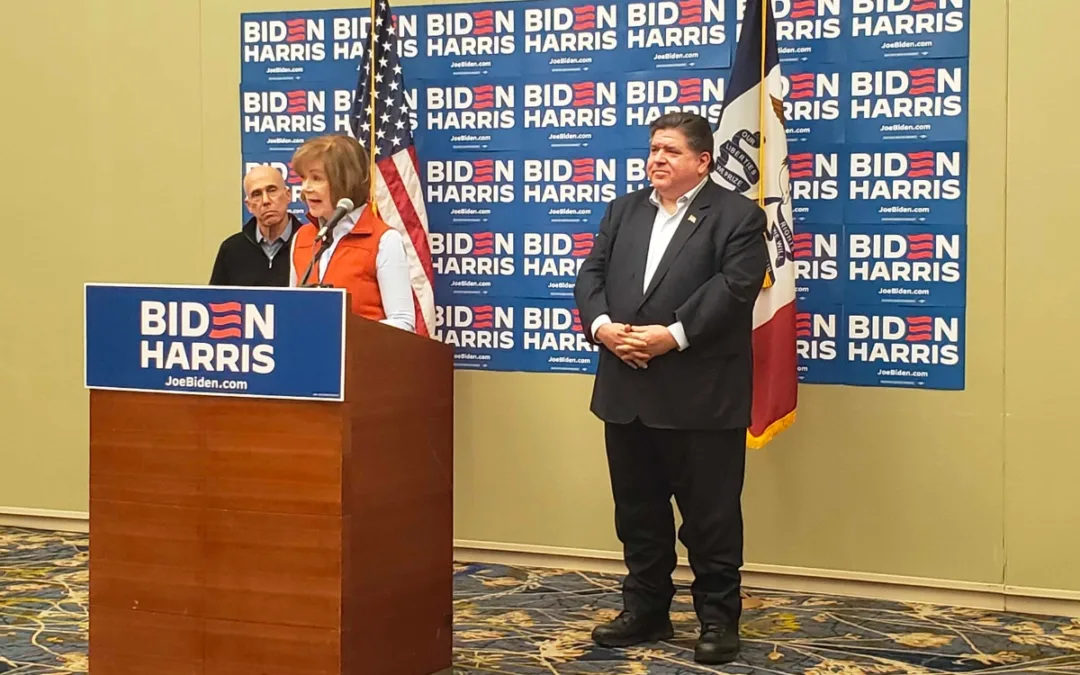
Original, heels or boots: Pritzker says leading Republicans are all MAGA
Illinois Gov. JB Pritzker said all three leading candidates in the Iowa GOP caucus—Donald Trump, Nikki Haley, and Ron DeSantis—represent the same...

Trump tells supporters it is worth dying to caucus for him
Former President Donald Trump continues to encourage his massive base to turn out in droves for him during Monday’s Republican caucus and told an...

Climate change protesters disrupt Ron DeSantis event
Climate protesters disrupted a Gov. Ron DeSantis campaign event in Ames on Thursday night. Three protesters were escorted out of the room at...

Evangelical leaders predict huge caucus turnout, downplay endorsements
Iowa caucus candidates have racked up big-name endorsements—including a notable last-minute flip flop—but one evangelical leader said none of that...
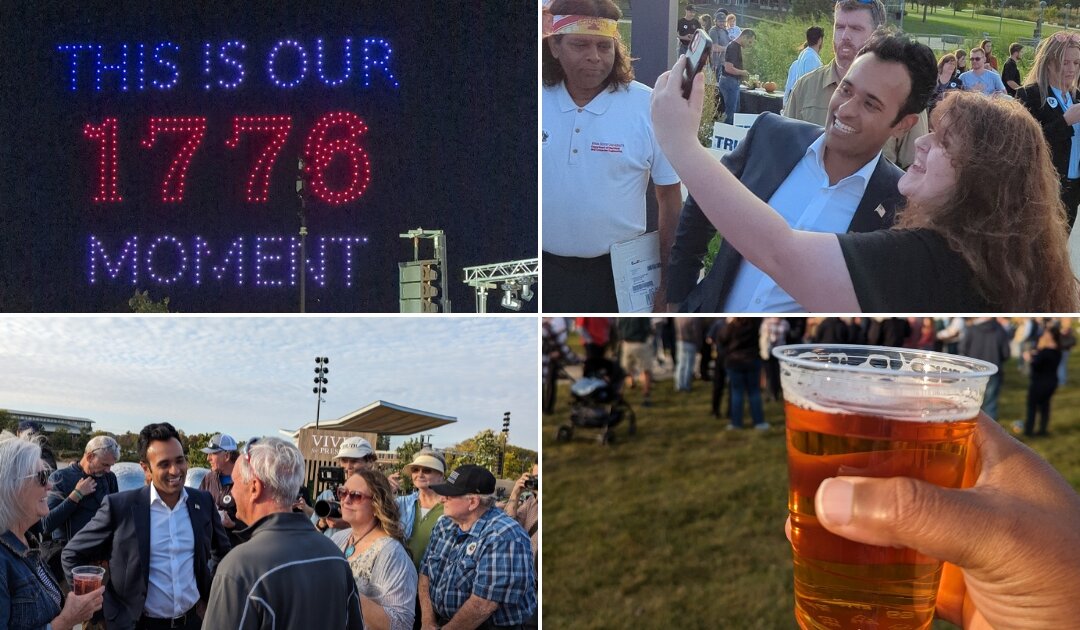
We went to Vivek Ramaswamy’s ‘Vektoberfest.’ Here’s what we saw
As I sat on a park bench eating a bacon-grilled cheese sandwich, drinking an Exile Ruthie straight from the tap, and chit-chatting with a few folks,...
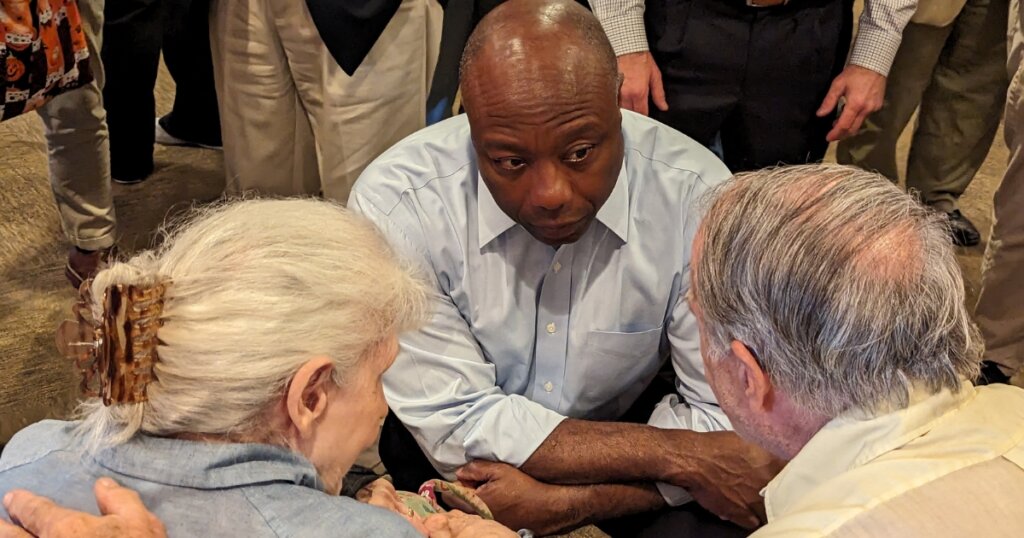
Tim Scott says kids need more exposure to conservatism
While many Republicans across the country have spent the last few years arguing that public schools are being used to indoctrinate kids into leftist...



